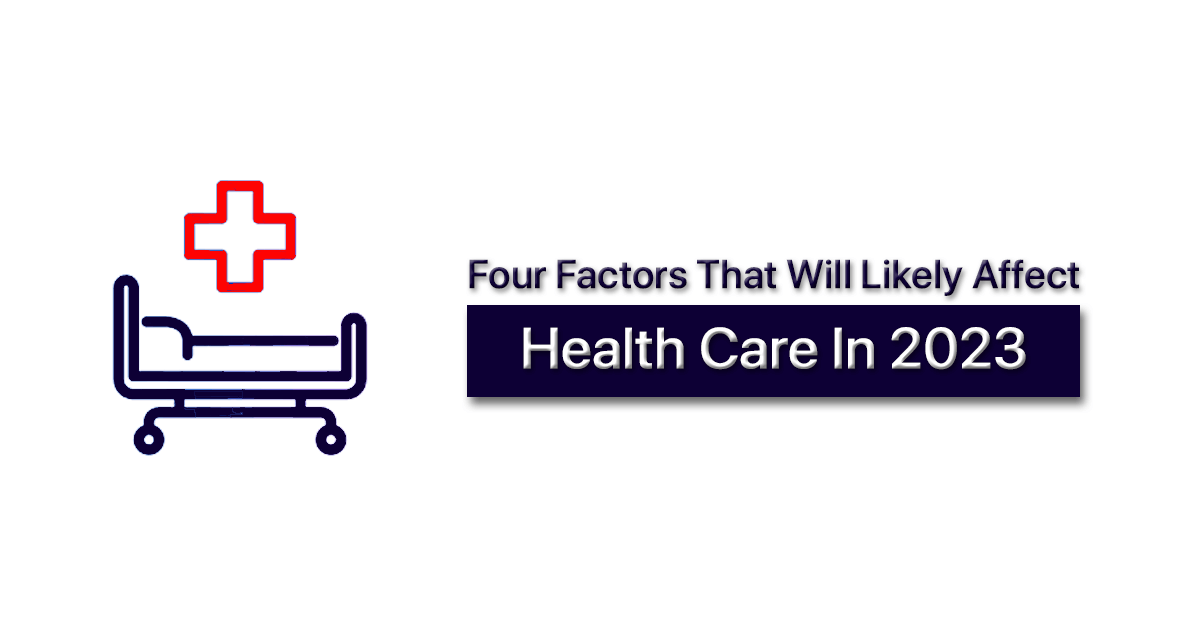Health care leaders are anticipating a turbulent 2023, according to a report. Staffing, inflation, shrinking margins, and supply chain issues are among the top concerns that will continue to challenge hospitals and health systems and have an outsized effect on overall strategy.
Here are the four factors identified as being the most likely to impact health care next year.
Inflation and Affordability
Health care is no longer immune to inflation, with 76% of health care leaders indicating they think it will have a significant impact on their strategy. Only 7% said it wasn’t likely to have any effect.
Rising cost-of-living expenses could cause some patients to delay routine care and screenings, similar to when the pandemic hit, resulting in worse health outcomes.
While most health system leaders indicated inflation would have a major impact on their strategy, less than half of health plan executives thought it would impact their near-term strategy. But the trickle-down effect of health care pricing will likely mean health plans could feel the effect after 2023 when health systems fell the brunt of the financial pain, according to the report.
Digital Transformation
With interest rates increasing, health care organizations may find it more difficult to modernize their technology and embrace digital transformations.
Just 29% of health system respondents said accelerated digital transformation would likely have a major impact on their organization’s strategy in 2023, while 63% thought it would have a moderate effect. Among health plan executives, however, accelerated digital transformation is expected to have a “great impact” (43%) or a “moderate impact” (50%) in 2023.
Health system leaders want to digitally transform but may not know how to pay for it, or they are anxious to implement long-delayed projects. Health plans also tend to be ahead of health systems on the technology front.
Shrinking Margins
Many health systems saw lower patient volumes and revenue during the pandemic and have yet to recover to pre-pandemic levels. With costs for supplies and labor rising, 2022 might end up being one of the worst financial years hospitals have experienced in decades.
Revenue continues to be squeezed by patients who are delaying care, and an increasing number of patients are shifting to ambulatory centers over hospitals for non-emergency procedures.
According to the report, median operating margins among hospitals and health systems were down 46% in September compared to the same month a year earlier. This margin compression might not be sustainable for many hospitals—particularly small and locally controlled organizations. As a result, some hospitals may get acquired while others might be forced to close their doors.
New Payment Models and Alternative Sites of Care
Transitioning to new payment models, such as value-based care (VBC), was seen as the top priority among health plan executives. Many health plans are likely to enter the new year in a strong financial position due to fewer health care claims in 2022. Hospitals and health systems, on the other hand, will be more focused on slowing losses in 2023. That could make it difficult for health plans to move their network providers into new payment models.
The report notes that consumers are looking for more convenience, which could give rise to alternative care sites that can offer a better customer experience. Alternative sites of care (defined as care outside the traditional doctor’s office) aren’t new, but they’re rising in prominence as the retail and digital worlds converge and the public sector recognizes the need to advance health equity and improve the consumer experience. At the same time, consumers are changing the way they want to access care and pushing the traditional health care visit and experience to be more in line with other encounters they have in daily life.
The expectation is that most health plans will see profitability in 2023, but hospitals and health systems are probably facing another challenging year as they try to balance financial pressures with the need to invest in the future while ensuring high-quality care.
For More Information: https://www.medicaleconomics.com/view/four-factors-that-will-likely-affect-health-care-in-2023

